Ochra et Nigreos |
Joyce Camilleri
Artist-in-Residence |
23 April 2021 - 30 May 2021
‘Ochra et Nigreos’ is an artistic residency that celebrates the colours, timbres and hues that have resonated in Joyce Camilleri’s artistic practice for the past two years. Ochres and blacks are in fact the two starring elements that were overtly auditioned and thoughtfully selected to impart Camilleri’s visual narrative of line and form on an otherwise empty space. Nigreos appears in the first act with its bold velvety blacks that wander along the surface of the paper, setting a veil of darkness on the underlying white surface. And yet, there are spaces that are forbidden to Nigreos; spaces that crave a warm golden light and the raw pigments of the earth, Ochra.
This rather poetic verbal depiction of the impetus behind this artistic residency is grounded in a timeless fascination for the materials, media and techniques employed, a renewed artistic practice characterised by constant redirection and a visual language that values the creative process, regardless of pre-set concepts, ideologies and subject matter. Drawing and printmaking methods merge into a hybrid that embodies the process of research into a purely aesthetic experience that honours the relationship between ideas and method.
Highlights from the exhibition




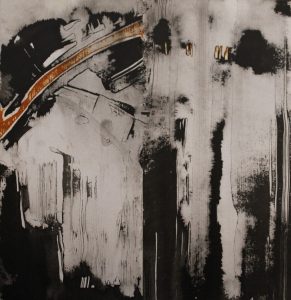

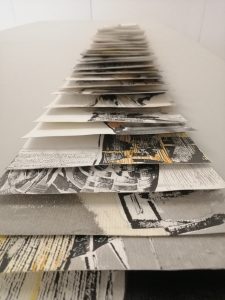

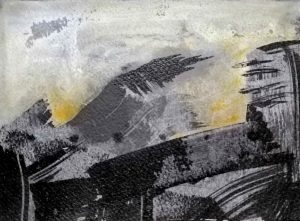

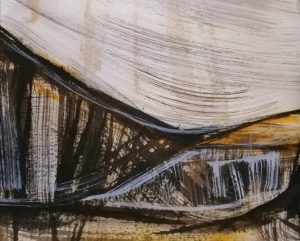

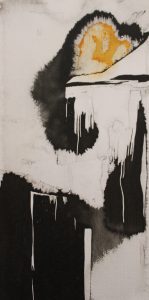

Share
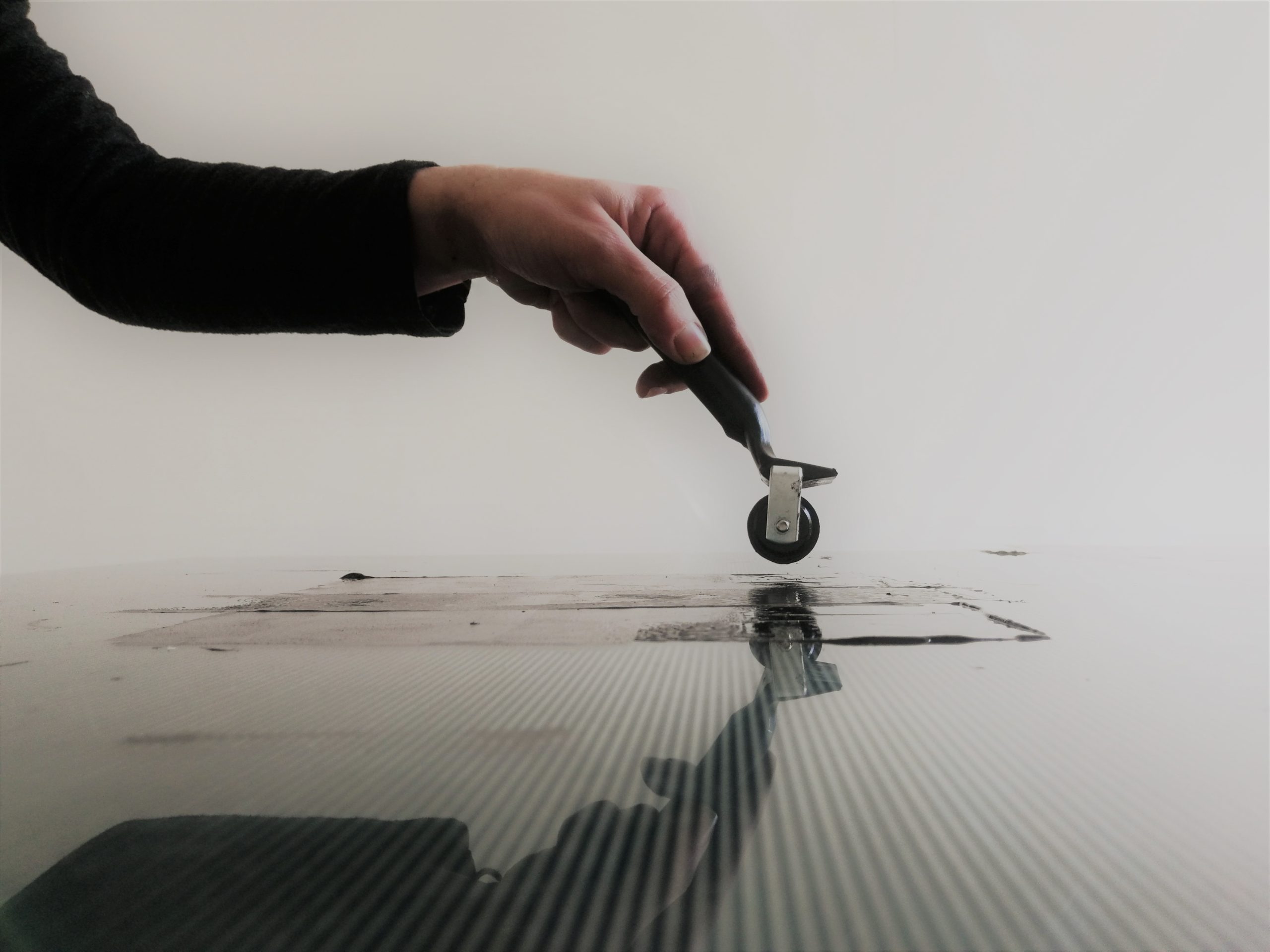


Joyce Camilleri
Born in Canada in 1980, Joyce Camilleri lived most of her childhood and adult life in her parents’ country of origin, Malta. Camilleri graduated as an art teacher in 2002, after which she felt the need to further her studies in the field of fine art. She thus pursued an artistic printmaking diploma at the Malta School of Art, whilst seeking further simultaneous training in Berlin and Salzburg. Camilleri completed her master’s degree as Artist Teacher at the University of West of Scotland in 2017.
Camilleri currently fills the post of full-time artist teacher at the Malta School of Art, whilst constantly developing a personal visual language that attempts to explore drawing and printmaking as distinct, nonetheless symbiotic art practices. Her studio practice allows Camilleri to push the boundaries of essentially graphical elements via drawing, printmaking, collage and mixed media practices, thus bringing about both figurative and quasi-abstract visual metaphors that meander along the fine line that divides yet unites the real and the surreal.
Alongside, such artistic research enables Camilleri to explore the poetic space of contemporary art forms, whilst constantly nourishing and revisiting an artistic process that is allowed to prevail over subject-matter. Artistic intent and process-led practices retain interchangeable roles throughout Camilleri’s approach to art theory and practice.




